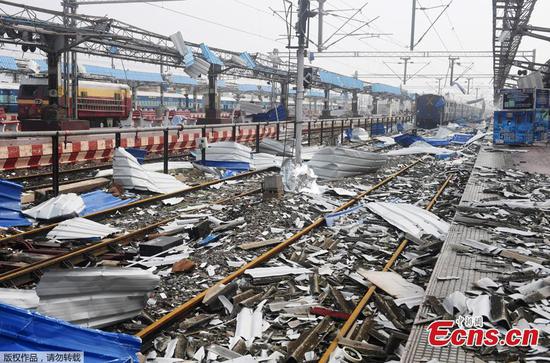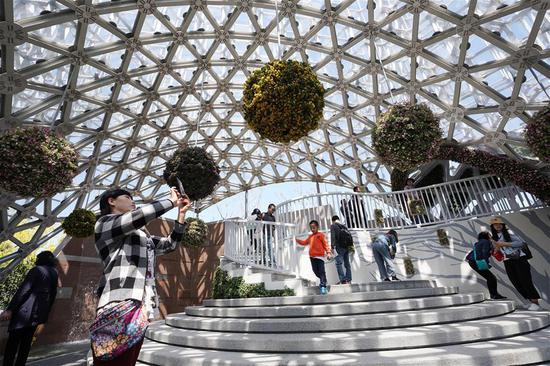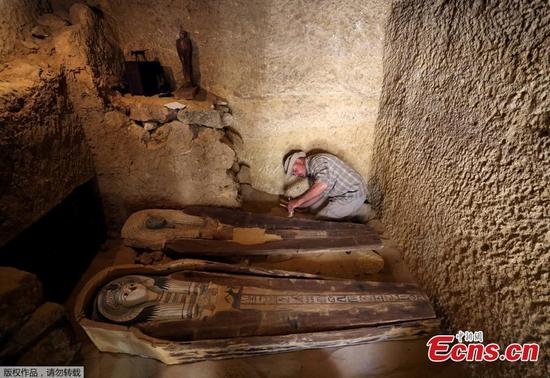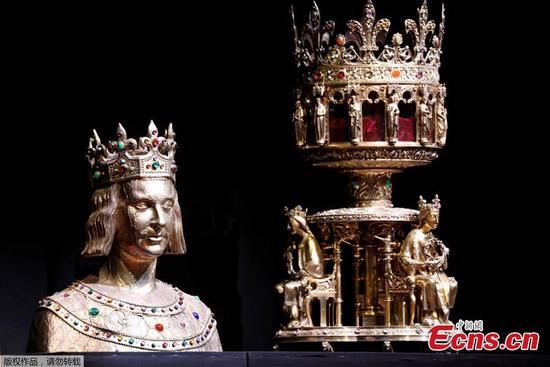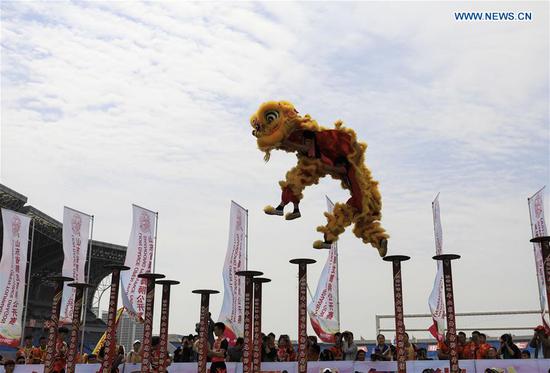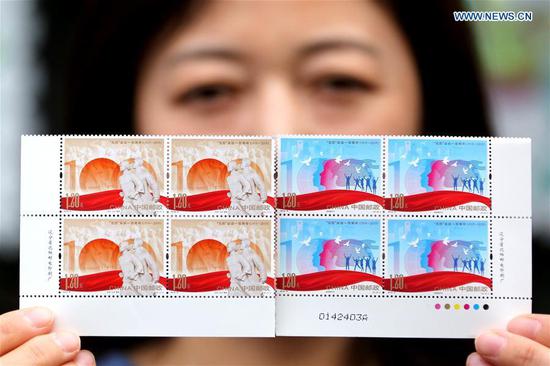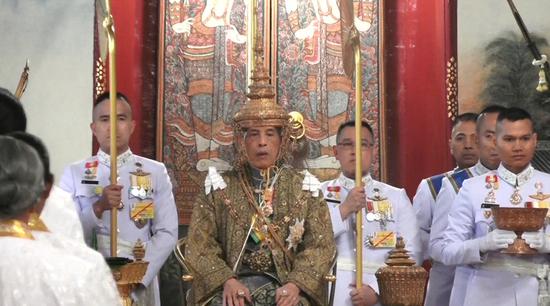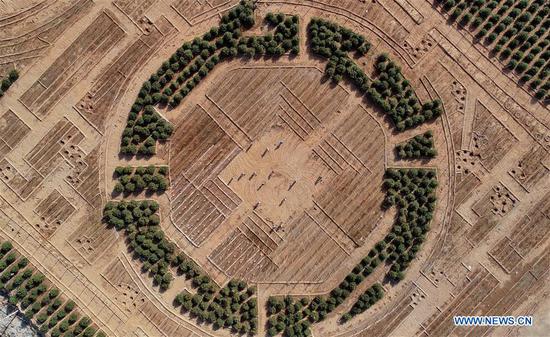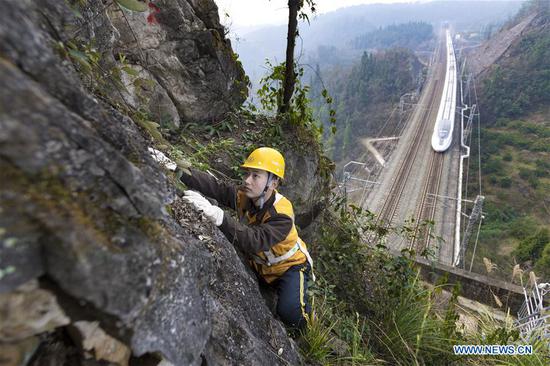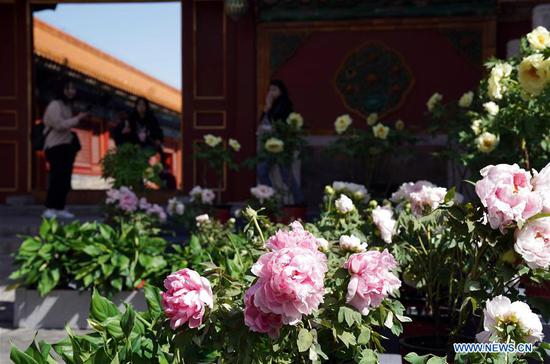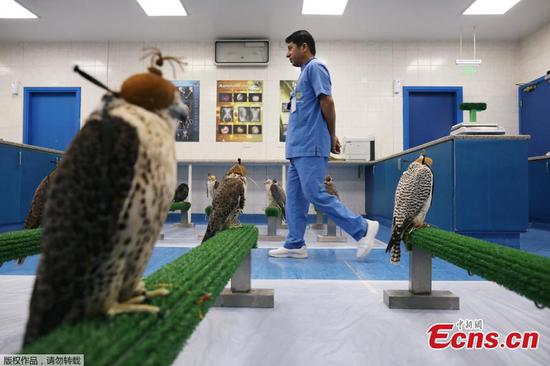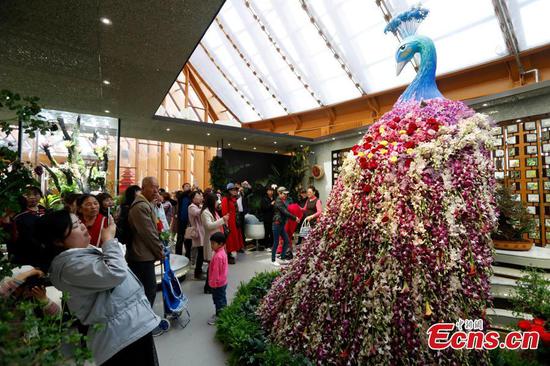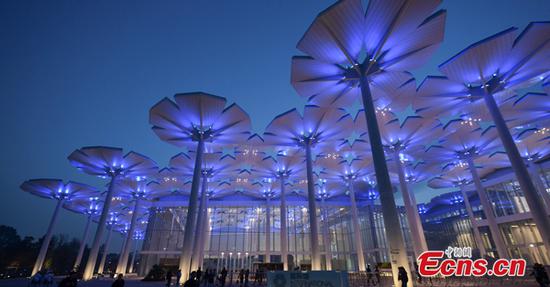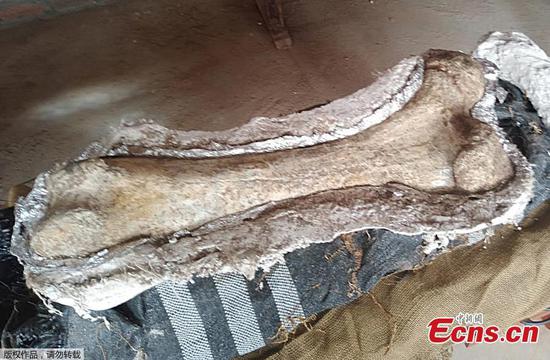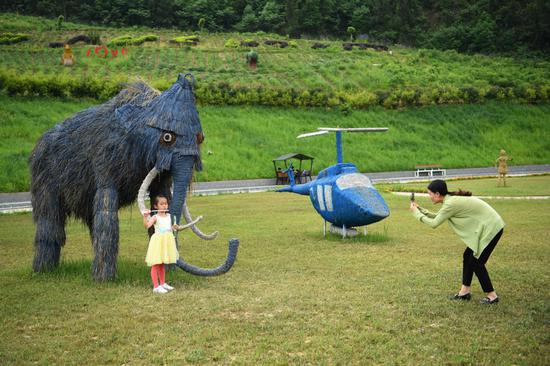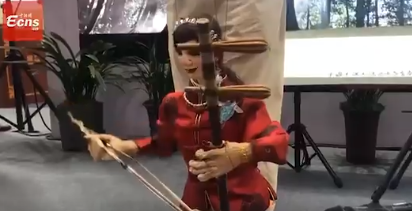Researchers are using 3D scanners to collect data about the size, color and structure of the Nanchan Temple on Wutai Mountain in northern China's Shanxi Province.
They plan to create a digital archive for the temple, which is the oldest extant wooden building from the Tang Dynasty (618-907) in China.
"We can learn more about the current situation of cultural heritages through data analysis and predict their morphological changes in years to come. Once damaged, it can be possible to restore them precisely," said Ning Bo, director of the digitalization office of Yungang Grottoes Research Institute.
In April, a fire ravaged the 850-year-old Gothic architecture Notre Dame Cathedral in Paris, which is a wake-up call in the protection of cultural relics worldwide.
At present, China is promoting digital technologies including laser scanning, 3D modeling and photogrammetry to conserve cultural heritages, especially ancient architectures such as UNESCO heritage sites Yungang Grottoes and Dunhuang Mogao Grottoes.
The Yungang Grottoes, located in the south of Wuzhou Mountain in Shanxi, boasts more than 59,000 statues carved in 45 caves and was listed as a UNESCO World Cultural Heritage site in 2001. However, the grottoes face serious threats of natural erosion despite recent restoration.
"Even today, scientists are unable to stop the aging of the grottoes using chemical or physical methods," said Li Zhirong, an associate professor with the cultural heritage institute at Zhejiang University.
Li said recording all the information related to the grottoes in a scientific way is a means of protection.
Researchers started exploring the digitalization of the Yungang Grottoes in 2003, trying to permanently preserve its valuable cultural relics and historical documents through technologies like surveying, laser scanning and artificial intelligence.
Thanks to 3D printing technology, a reproduction of a cave in the Yungang Grottoes is being displayed in the eastern coastal city of Qingdao.
The full-size replica, 17.9 meters long, 13.6 meters wide and 10 meters tall, maintains its original texture, even after thousands of years of weathering and erosion.
"It's hard to believe that they have been reproduced. They look so real," said Zhang Zhuo, head of the Yungang Grottoes Research Institute.
Replicas based on the original cave No. 12, also called "Cave of Music," and No. 18, a representative of early caves of the grottoes, have been made by 3D printers and are waiting for the last process - coloring.
"The Yungang Grottoes attracts a large number of visitors from Qingdao annually. Most of them decide to visit the grottoes after seeing the replicas," Ning said.
He added that the reproductions of cave No. 12 and 18 can be divided into parts and then be pieced together, making them convenient for tour exhibitions.
Digital technology has also been adopted in the monitoring system of the grottoes such as recording the weathering speed of statues.
Yungang Grottoes is not the only pioneer in the application of digital technologies in cultural heritage preservation and display in China.
Technologies such as immersion display, precious reproduction and virtual interaction have been used in the display and preservation of the Dunhuang Mogao Grottoes, a 1,600-year-old UNESCO world heritage site in northwest China's Gansu province.
Meanwhile, the Palace Museum launched a travel exhibition to enable virtual visits to the Hall of Mental Cultivation, where several Qing Dynasty (1644-1911) emperors handled routine state affairs and received officials.
The museum has carefully recorded and collected digital data on the hall's architecture and its collections since 2006. With virtual reality and digital resources, the audience can spend a day in the hall virtually, learning about ancient architecture and life in the Qing court.
Ning said cultural heritage may be damaged or lost, but the information they carry will last forever with technologies.
He also pointed out that digital technologies are only a means of protection and display. "What really matters is the conservation of the original cultural heritages themselves," Ning said.











